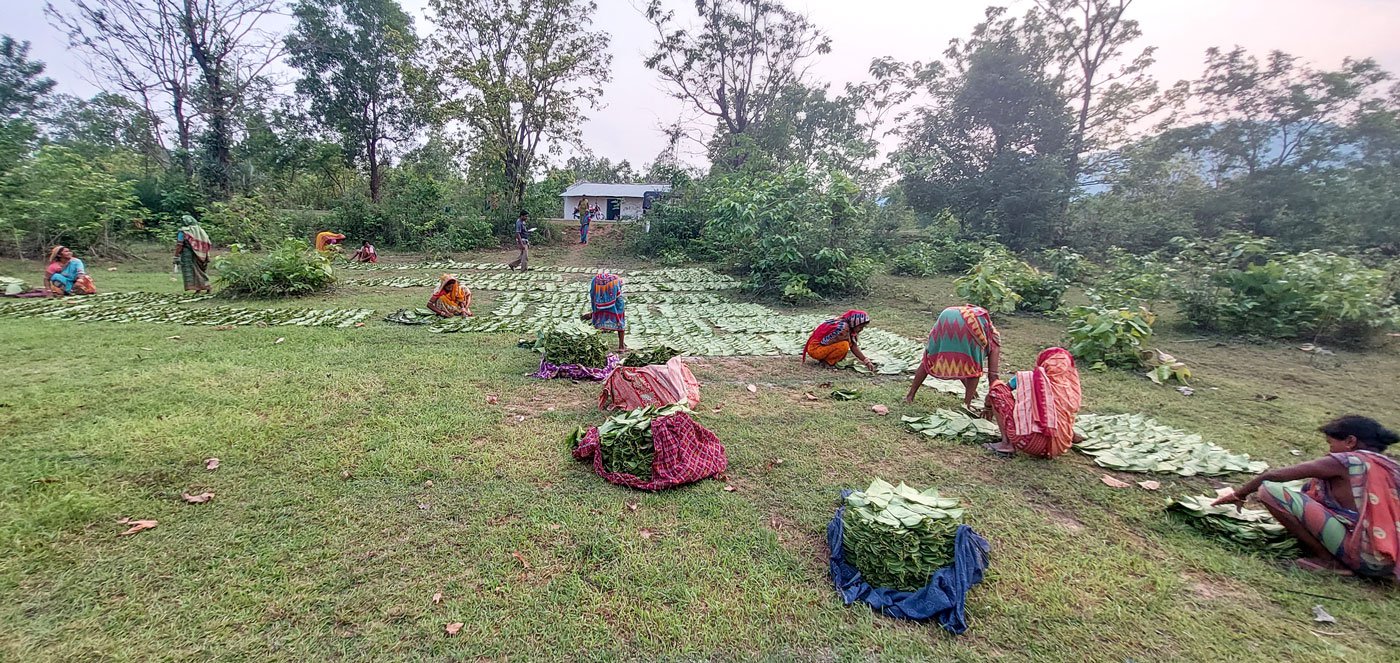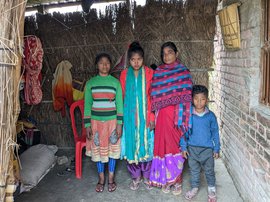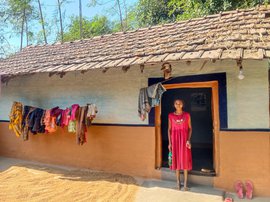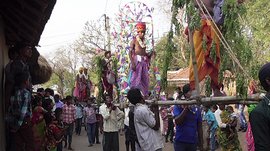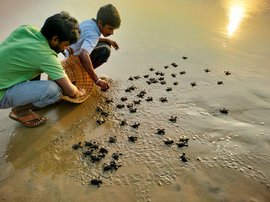My home is in an Adivasi village called Indira Colony. There are 25 families from different Adivasi communities living here. We have a water tank and toilet in our village, and a well for drinking water.
Some people in the village have cultivable land, and they grow paddy, brinjal, maize,
jhulana
, lady finger, bitter gourd, pumpkin and a variety of pulses like
kolatha
[horsegram],
kandula
[toor dal/pigeon pea],
moong dal
etc. Most cultivate paddy as we can also eat it. Paddy cultivation takes place during the rainy season.
We keep some paddy for our consumption at harvest time and sell the remaining quantity. The money we earn after the sale depends on the cost of fertilisers and other inputs.
Some of the houses in our village are thatched. Thatching protects us from the sun, rain and cold. The thatch has to be changed every one or two years. We use aguli grass, saalua , bamboo, lahi and wood from the jungle to redo our houses.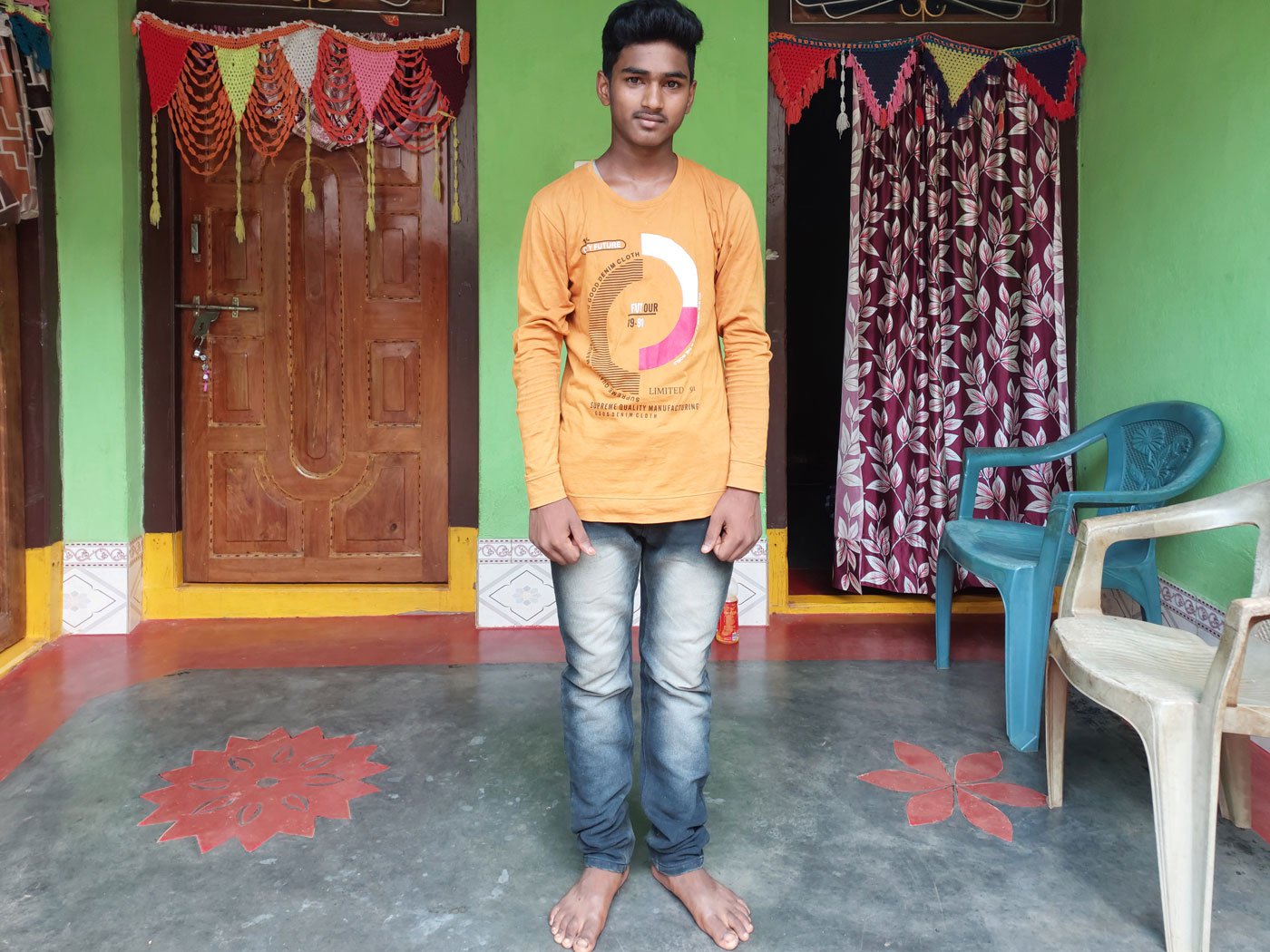
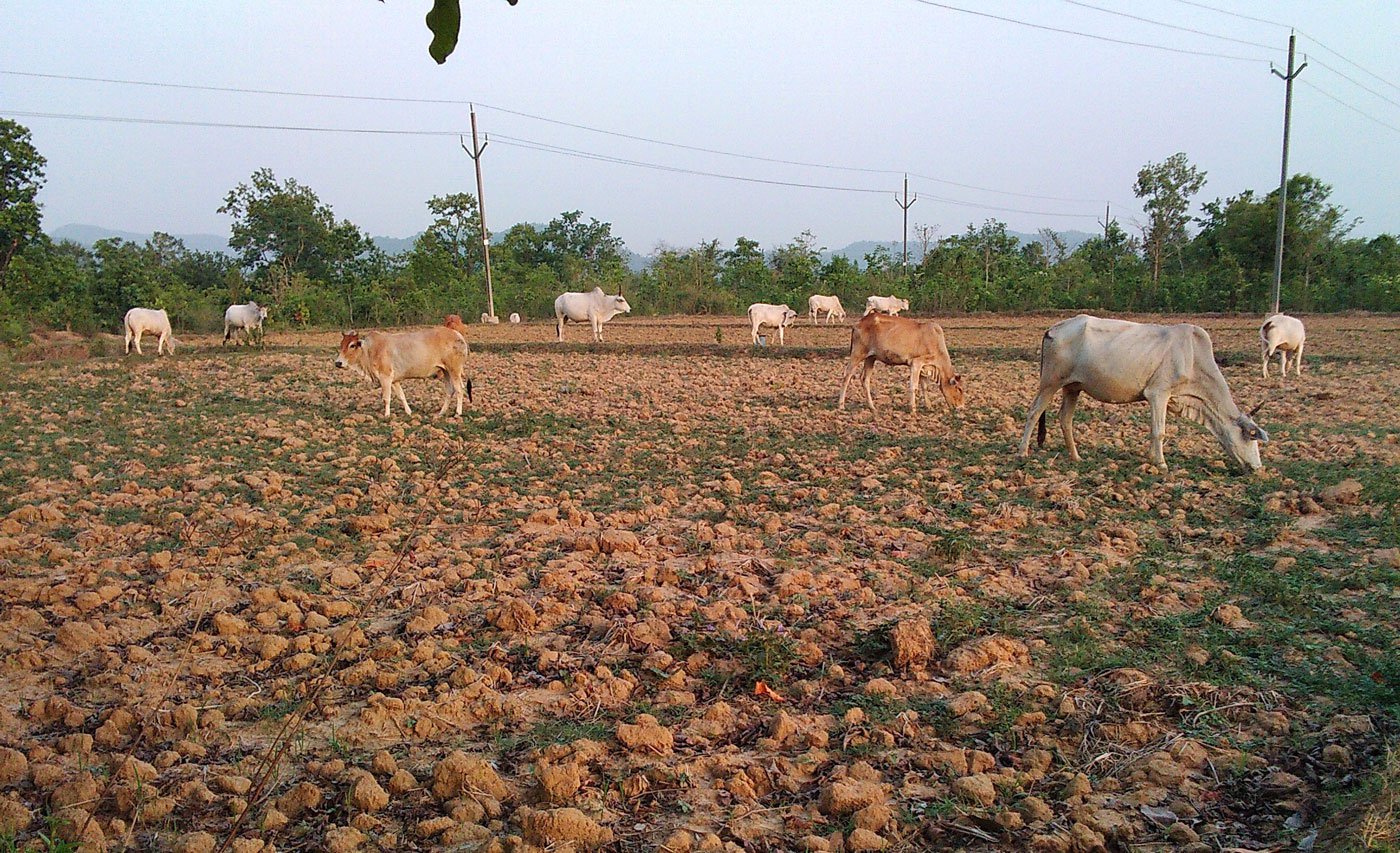
Left: Madhab in front of his house in Indira Colony. Right: Cattle grazing in the village
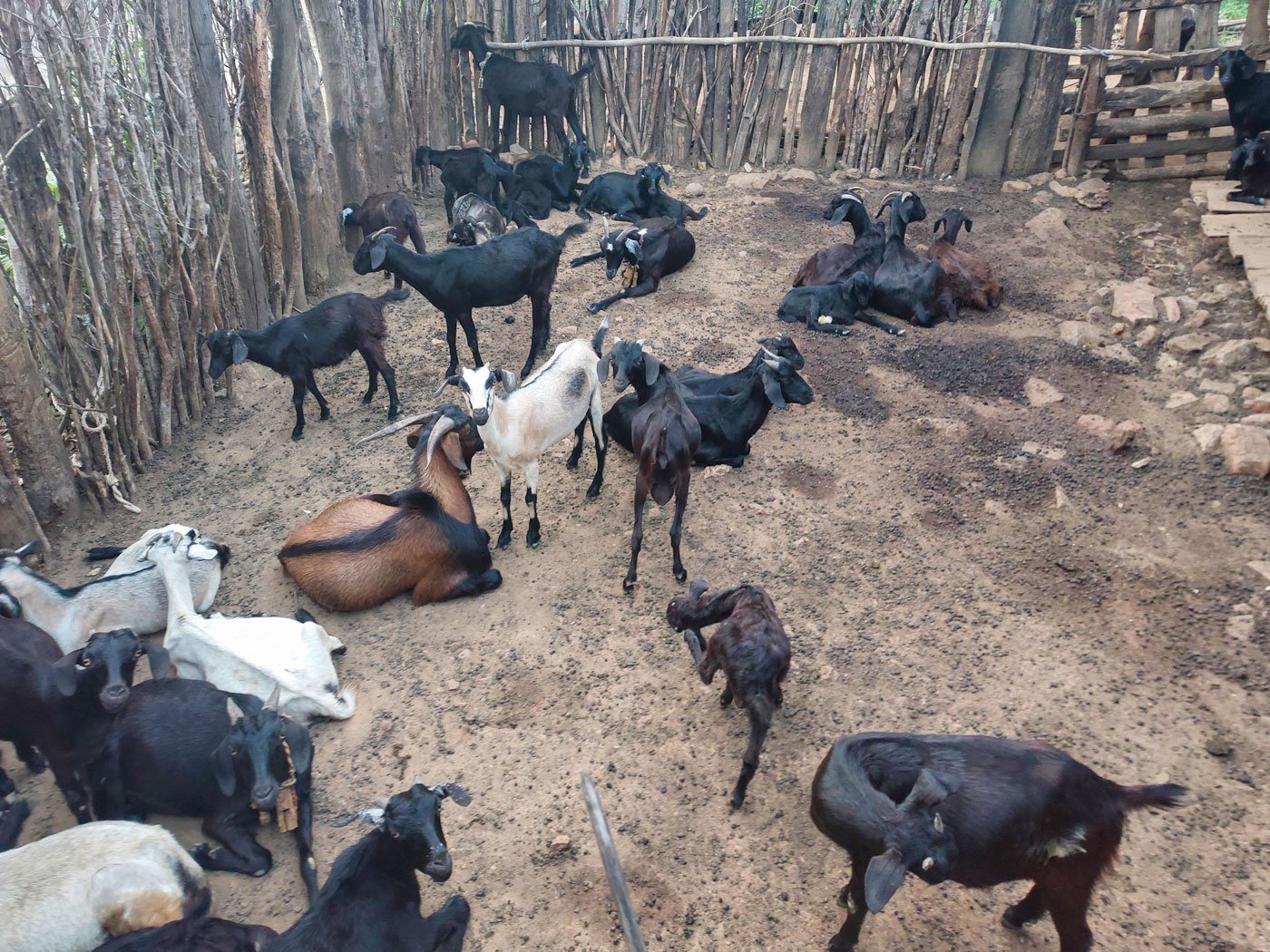
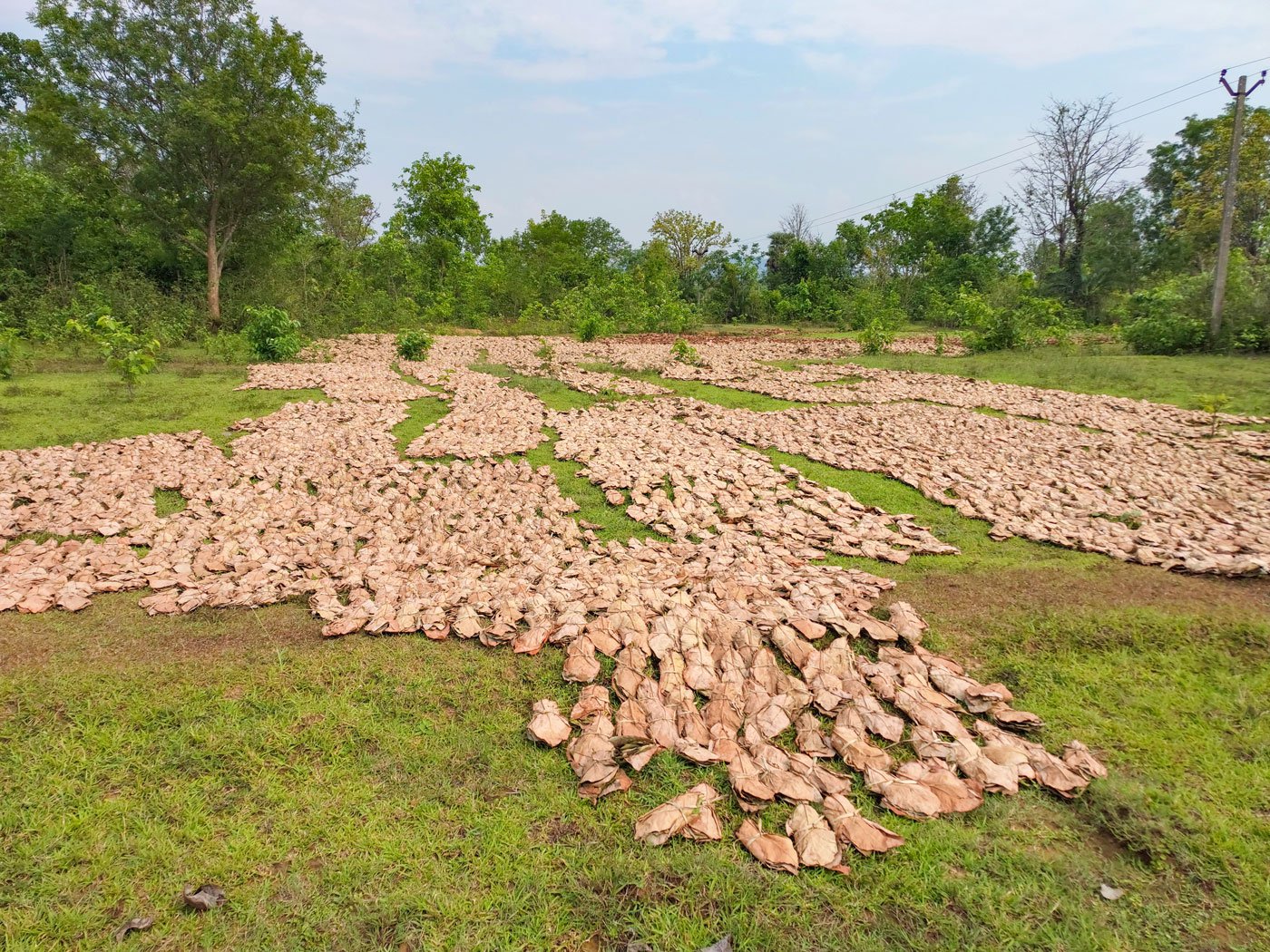
Left: Goats, along with hens, cows and bullocks that belong to people in the village. Right: Dried kendu leaves which are ready to be collected
This is the baguli grass that is used as thatch. We cut this grass from the jungle and dry it in the sun for two or three months. Then we must keep it dry for some more time as any rain will spoil it. For the roof of our thatched houses, we use clay tiles that we make in the village.
This is a bullock cart and except for the wheels, all the other parts of the cart are made of wood or bamboo. We use this to bring paddy from the fields and wood from the jungle. Sometimes we also use it to carry dung to the field. Nowadays this kind of cart is slowly going out of use.
Most of the people in my village domesticate cows, bullocks, goats and hens. We feed them cooked-rice water, rice bran and moong . At night our animals chew dry fodder. We take the cows and bullocks to the jungle or agricultural fields for grazing. There is green grass when it rains but this dries up during the summer months and the cows and bullocks do not get enough feed from grazing.
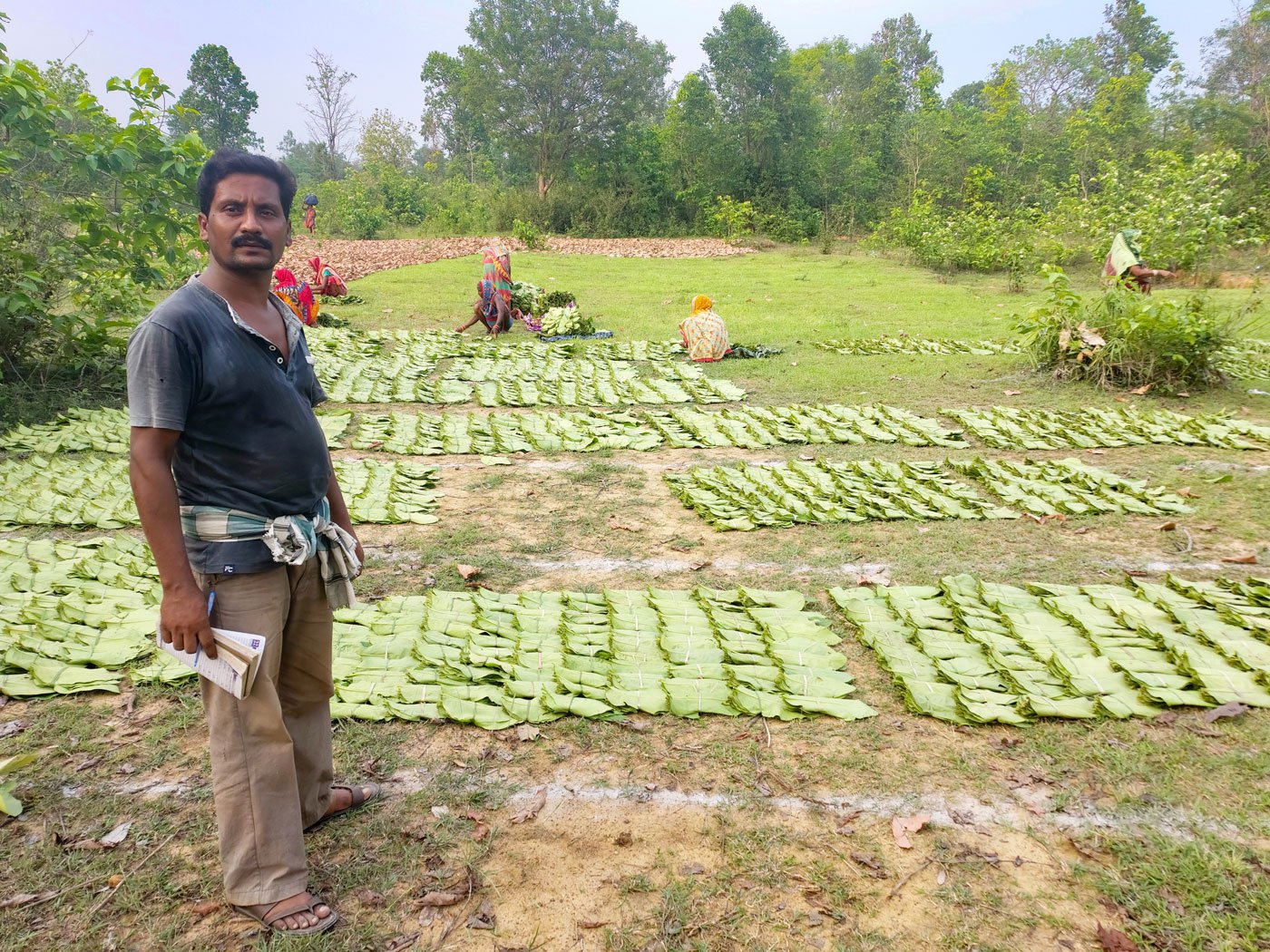
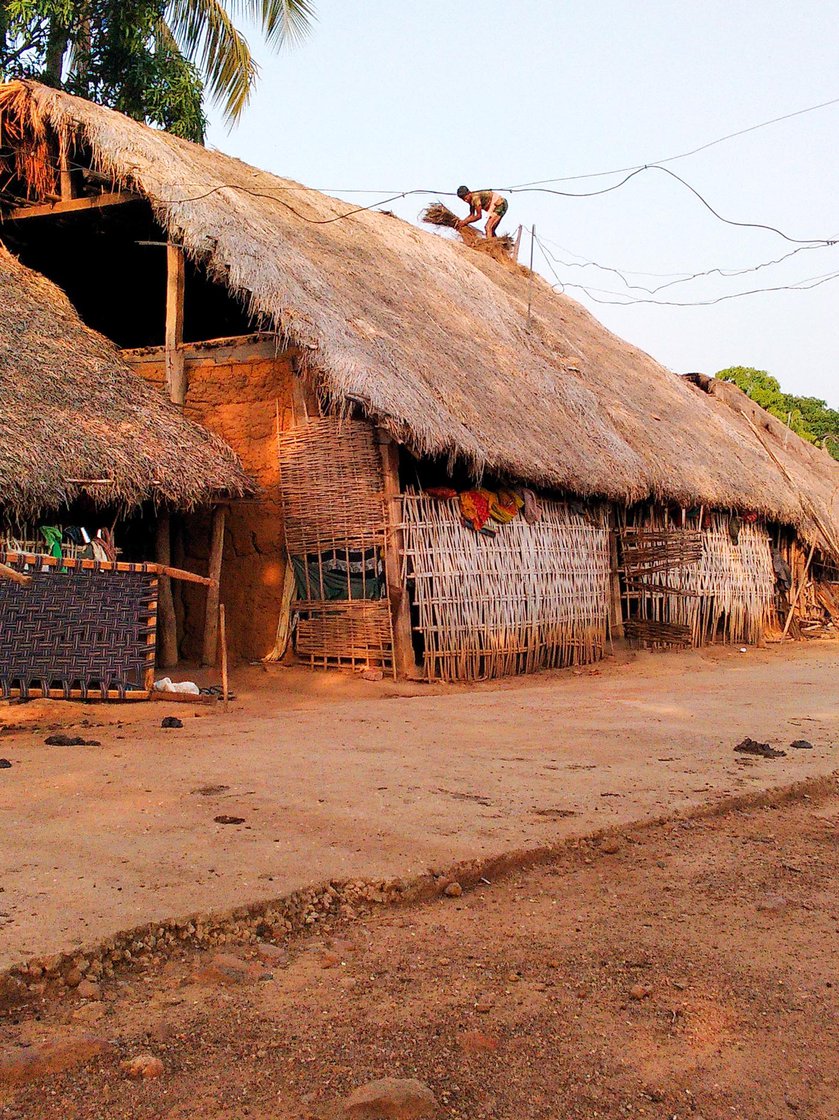
Left: Ranjan Kumar Nayak is a contractor who buys kendu leaves from people in the village. Right: A thatched house in the village
We use cattle manure for our fields – dung is spread as manure in the fields before cultivation starts. People in the village earn from selling cows and bullocks. A cow can cost around 10,000 rupees.
Some of the mothers in our village now pluck kendu leaves, salapatra [Sal leaves] and mahua to earn an added income.
This is the dry mahua flower. The mothers in the village go to the jungle in the morning and bring them home by 11 a.m.. The flowers are collected and dried in the sun for up six days. Then they are kept in sacks to dry for two or three months. We sell mahua juice for 60 rupees a mug and a full mug of mahua flowers are sold for 50 rupees. It is very difficult to collect these mahua flowers.
Our community is like our family and we help each other out.
The Education team at PARI would like to thank Sharbani Chattoraj, Manager Innovation and Strategy, Gram Vikas Residential Schools and Santosh Gouda for their help with this story.
